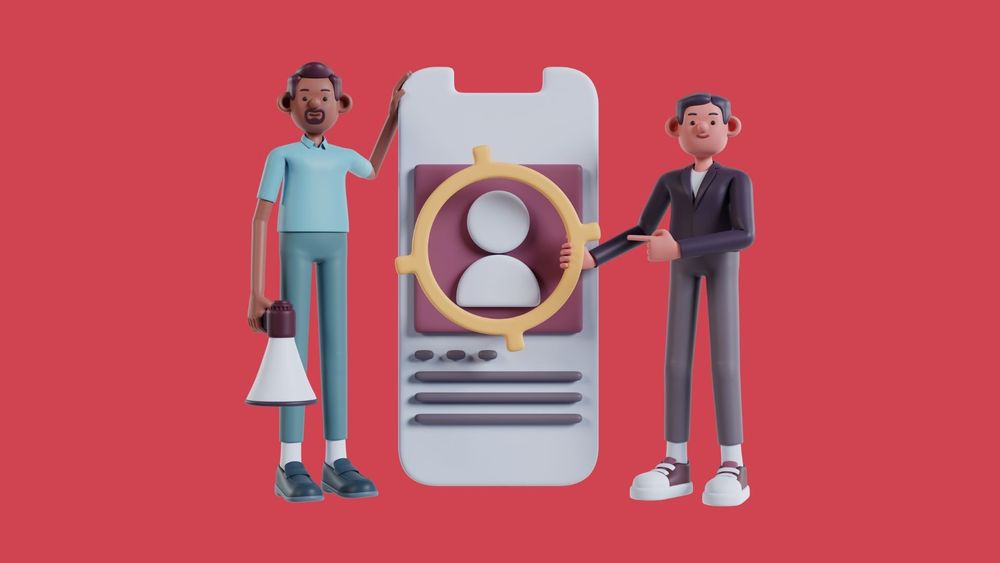What is 3D Modeling?
Immersing yourself in a virtual world has become an everyday experience for many, whether soaring through space in a video game, strolling through your dream home before it's even built, or ogling at a jaw-dropping product ad. Three-dimensional (3D) modeling has made these experiences possible and mind-bogglingly transformative. So, let's embark on a journey through the riveting universe of 3D Modeling—a realm where art and technology dance the tango..
What is 3D modeling, you ask? Well, formally defined, 3D modeling is the process of crafting a mathematical representation of any three-dimensional object or shape using fancy-pants software. Picture this: it's like getting your hands on a lump of soft clay—like the kind kids use for craft projects—and molding it into something fantastical. But instead of clay, you're doing it on a computer screen. Voila! That's what 3D modelers do every day, my friend.
The end result can be visually complex, depicting realistic details that could give the real deal a run for its money. Imagine creating a high-definition model of your favorite sports car with a gleaming paint finish, precise emblem placement, and interiors so lifelike, you can practically smell the leather seats. On the other hand, it can also involve simpler geometric shapes like spheres, cubes, or cylinders for those who prefer their art to be a little more abstract.
Remember when I asked you to imagine molding clay? Well, one popular method in the world of 3D modeling is subdivision modeling, which is remarkably similar to sculpting with clay. It starts with basic shapes and gradually refines them by adding more layers of detail. Other methods include polygonal modeling, where you piece together flat shapes (polygons) to create complete models, or Nurbs/non-uniform rational b-splines, which are great for smooth, curvy surfaces in industries like automotive and aerospace design. And let's not forget box/solid modeling, which is widely used in architecture and engineering for precise spatial calculations.
Alright, enough with the theory already. Are you ready to dive into the nitty-gritty of how this magical tool works? Let's roll up our sleeves and get down to business.
How Does 3D Modeling Work?
Before we can truly appreciate the awesomeness of 3D modeling, we need to understand what the heck 3D even means. In simple terms, it refers to three-dimensional space. Think depth, width, and height—the stuff that makes our world go round. Now, imagine capturing all that rich detail in a computer file. That's where 3D modeling comes into play.
But who are the brave souls behind these virtual creations, you ask? They're the artists and designers who wield specialized software like virtual Michelangelos, shaping digital masterpieces. You know those captivating characters, breathtaking landscapes, and mind-blowing architectural blueprints? Yeah, they're all born from the minds and skillful hands of 3D modelers.
Now, let's talk about how the whole shebang works. It all starts with designing an outline or wireframe of the object. Think of it as a skeleton—a roadmap of sorts. With an arsenal of tools within their chosen software, modelers add complexity to this skeleton by sculpting detailed surfaces and textures, just like adding muscles to bones. It's like playing with Play-Doh, except without the funky smell.
First, they construct a wireframe by manipulating basic shapes like circles and squares, adjusting them with lines (edges) and points (vertices). This creates a mesh that traces every glorious detail of the model's form. Once the wireframe is complete, it's time for surface detailing. This is where they slap on layers of textures to make it look realistic—colors, materials, the works. And to make sure these models don't dwell in the dark ages, they give them some fancy lighting too.
Now, these steps are just the tip of the iceberg. Depending on what's being modeled—a terrain, an animated character, or even a quirky teapot—additional stages may be required. It's a never-ending dance of creativity and technical prowess.
Now, I hear you asking, "Which is the absolute best 3D modeling software out there?" Well, my friend, there's no one-size-fits-all answer to that question. It all depends on factors like budget, project type, and personal preference. But fear not, for there are plenty of options out there to satisfy your 3D modeling cravings.
So there you have it, a glimpse into the world of 3D modeling—a world where dreams take shape with just a few clicks and strokes. But remember, my fellow adventurer, practice makes perfect. So go forth and create digital wonders that will make the virtual gods weep tears of joy!
Uses of 3D Modeling: Where the Magic Happens
Now that we've waltzed through the basics of 3D modeling, it's time to explore its applications across a wide array of industries. Brace yourself for a wild ride as we dive into the transformative powers of this captivating technology.
Game Development: Let's start with the big kahuna—the gaming industry. 3D modeling is the cornerstone of creating immersive gaming experiences that transport players to breathtaking virtual realms. Game developers utilize advanced 3D modeling software to craft interactive worlds filled with lifelike characters, stunning landscapes, and enough action to make your head spin.
3D Printing: Ah, 3D printing, the magical process that turns digital dreams into physical reality. With a well-constructed 3D model as a blueprint, you can bring intricate designs to life. Whether you're printing custom jewelry pieces or sturdy car parts, 3D modeling lays the foundation for turning your wildest imaginations into tangible objects. It's like having a personal factory right in your home!
Architecture: If you thought 3D modeling was just for virtual worlds, think again. In the field of architecture, it's an absolute game-changer. With accurate visualizations before a single brick is laid, architects and engineers can spot potential issues, make necessary revisions, and bring architectural designs to life with jaw-dropping realism. It's like being able to walk through your dream home before it even exists!
Film & TV: Lights, camera, 3D modeling! The film and television industries have embraced this technology wholeheartedly, using it to create mind-blowing special effects that leave audiences in awe. From breathtaking action sequences to enchanting animations, 3D modeling is the secret sauce behind the on-screen magic that captivates our imaginations.
Product Design: Last but certainly not least, we have the world of product design. Creating physical prototypes can be a time-consuming and expensive process. But fear not, for 3D modeling swoops in to save the day! Designers can refine their creations with meticulous precision on a computer screen, saving time, resources, and a whole lot of headaches. So the next time you marvel at a beautifully designed product, remember that 3D modeling played a crucial role in bringing it to life.
And that, my friend, is just the tip of the iceberg. From healthcare to archaeology, 3D modeling has seeped into nearly every nook and cranny of our world, shaping industries and redefining what's possible. It's like a magician's wand, transforming the ordinary into the extraordinary.
Types of 3D Modeling Software: Choose Your Digital Arsenal
Now that we've explored the vast applications of 3D modeling, it's time to dive into the exciting world of software. Each type of software has its own set of superpowers, catering to different needs and preferences. So, let's unleash the options and find the perfect weapon for your digital arsenal.
CAD-based Software: Prepare to meet the superheroes of precision design—CAD-based software. These tools, like AutoCAD and SolidWorks, are beloved by engineers and architects for their ability to create precise 2D drawings and 3D models. They're like the Sherlock Holmes of the 3D modeling world, solving complex design mysteries with unrivaled accuracy.
Polygonal Modeling Software: If you're in the market for creating complex characters and environments with mind-blowing textures, polygonal modeling software is your best friend. Blender and Maya are the big names in this category, packed with features that will make your creations pop. Think of them as the Michelangelo and Da Vinci of the digital realm.
Sculpting Applications: Are you yearning for a more tactile experience while crafting your models? Sculpting applications like ZBrush are here to fulfill your creative desires. They let you sculpt and mold your digital clay with the finesse of a master artist. It's like having a virtual pottery wheel, but with unlimited possibilities and way less mess.
These are just a few examples of the powerhouses in the 3D modeling software realm. Remember, the choice ultimately depends on your specific needs, whether you're an engineer in need of precision or an artist seeking boundless creativity. So go forth, my friend, and choose your digital companion wisely!
How to Learn 3D Modeling: Unleash Your Inner 3D Maestro
Now that you're armed with the knowledge of what 3D modeling is and the tools at your disposal, it's time to embark on your journey to becoming a 3D maestro. But fear not, for I have some tips and tricks up my sleeve to help you along the way.
Courses and Tutorials: The path to mastery often begins with structured learning. Online platforms like Coursera, Udemy, and Lynda offer a treasure trove of courses crafted by industry experts. From basic sketching practices to intricate texturing techniques, these courses will equip you with the skills you need to create digital wonders. And don't forget the free tutorials available on YouTube and specialized forums. They're like little nuggets of wisdom waiting to be discovered.
Practice and Experimentation: Learning by doing is the name of the game. Once you've laid a solid foundation through courses and tutorials, it's time to spread your wings and fly. Undertake small projects that challenge your skills and push your boundaries. Experiment with different forms, materials, and styles. The more you practice and explore, the faster you'll soar to new heights of mastery.
Benefits of 3D Modeling: Unleash Your Creative Superpowers
Now that you've delved into the world of 3D modeling, it's time to bask in the glorious benefits it offers. Brace yourself, for these benefits are as plentiful as the colors in a digital rainbow.
Efficiency and Speed: With 3D modeling, design processes become lightning-fast. Unlike traditional methods, where changes require a complete do-over, 3D modeling allows for immediate visual feedback. You can iterate and improve your designs on the fly, saving time and headaches.
Increased Accuracy: 3D modeling is a precision instrument in the hands of a skilled artist. It eliminates the margin for error that plagues traditional drafting methods. With numerical calculations and precise measurements, you can create models with unparalleled accuracy.
Enhanced Visualization: Say goodbye to abstract sketches and hello to realistic representations. 3D models provide a tangible, lifelike view of your creations. Whether you're presenting to clients or simply marveling at your own genius, the visual impact is undeniable.
Improved Communication: 3D models are like a universal language that bridges the gap between designers, clients, and stakeholders. They allow you to effectively convey your ideas and concepts, reducing misunderstandings and facilitating constructive dialogue. It's like having a crystal-clear telepathic connection with your audience.
So there you have it—the benefits of 3D modeling are as tantalizing as a plate of chimichangas. Efficiency, accuracy, visualization, and communication are just a few of the superpowers that come with wielding this incredible tool.
Common Challenges in 3D Modeling: Embrace the Adventure
Like any thrilling adventure, the world of 3D modeling is not without its challenges. But fear not, brave artist, for with these challenges come opportunities for growth and triumph.
Intricate Design Requirements: The path to 3D mastery is often paved with intricate designs that require a keen eye for detail. It can be overwhelming, especially for beginners, but remember that every intricate design you conquer is a step closer to greatness.
The Learning Curve of Software: Ah, the ever-steep learning curve. Mastering new software can be a daunting task, my friend. But fear not, for with practice and perseverance, you shall conquer the beast. Take the time to familiarize yourself with your chosen software, and soon enough, you'll be taming it like a digital beast master.
Maintaining Realism: Realism is the holy grail of 3D modeling. Achieving it requires patience, attention to detail, and a sprinkle of artistic magic. It's like walking a tightrope between fantasy and reality, but with enough practice and dedication, you'll find your balance.
Texture Imbalances, Lighting Glitches, Unnatural Shadows: Ah, the trifecta of modeling woes. Achieving balanced textures, perfect lighting, and natural shadows can be a tricky business. But fear not, for with every glitch you encounter, you'll gain valuable insight and honed skills. It's all part of the adventure.
So, embrace these challenges with open arms. Each one is an opportunity for growth, learning, and the occasional victory dance. The path to 3D mastery may have its twists and turns, but the view from the mountaintop is oh-so-sweet.
Best Practices in 3D Modeling: Rise Above the Rest
To truly excel in the world of 3D modeling, it's essential to follow best practices that elevate your skills and make your creations shine. So, let's dive into some golden rules that will set you apart from the pixel-pushing crowd.
Always Start with a Blueprint: Just like an architect wouldn't build a house without a blueprint, you should never start a 3D model without a detailed plan. Take the time to sketch out your concept and visualize the overall structure. It may seem tedious, but it will save you countless revisions in the long run.
Keep It Real: Realism is the name of the game in 3D modeling. Take inspiration from the world around you and pay attention to shapes, forms, and textures. The more you observe and incorporate real-world elements into your designs, the more authentic they will appear.
The Art of Efficiency: Optimization is key. Strive to create efficient models by using only the necessary polygons and minimizing unnecessary complexity. Balance aesthetics with performance, and your models will soar.
Master Topology Techniques: Topology is the secret sauce that ensures smooth animations and believable deformations. Study theart of topology and hone your skills in creating clean and efficient edge flows. With mastery in topology, your models will come to life with fluid animations and captivating realism.
In summary, these best practices are the compass that will guide you through the vast expanse of 3D modeling. Starting with a blueprint, embracing realism, optimizing efficiency, and mastering topology will elevate your skills to new heights.
Efficiency-Boosting Tips for Successful 3D Modeling: Unleash Your Inner Maverick
Now that you're well on your way to becoming a 3D modeling maestro, let me equip you with some efficiency-boosting tips. These nuggets of wisdom will turbocharge your design process and help you unleash your full creative potential.
Know Your Software Inside Out: To truly harness the power of your chosen software, you must know it like the back of your hand. Explore every nook and cranny, experiment with different tools and techniques, and unlock the hidden gems that will make your workflow seamless and efficient.
Start Simple, Dream Big: When embarking on a new project, it's tempting to dive headfirst into complexity. But remember, my friend, Rome wasn't built in a day. Start with simple shapes and gradually level up your skills. With each success, your confidence will soar, and your dreams will become grander than ever.
Reference Images are Your Allies: Even the greatest artists draw inspiration from the world around them. Collect reference images that align with your vision and use them as your guiding light. They will keep you on track and ensure your models are accurate and visually stunning.
Details, Details, Details: The devil is in the details, my friend. Pay attention to textures, lighting, and shadows. They are the ingredients that bring your models to life. Don't be afraid to obsess over the smallest nuances, for it's in those details that true artistry shines.
Validate, Validate, Validate: Regular validation is the key to maintaining a healthy model. Use boolean operations and rendering checks to identify and fix errors early on. Prevention is always better than cure!
With these efficiency-boosting tips in your arsenal, you'll be a 3D modeling maverick, blazing trails of creativity and innovation. So go forth, my friend, and let your imagination run wild!
Applications of 3D Modeling in Different Industries: Shaping the World, One Model at a Time
As we reach the final frontier of our journey, let's explore the vast applications of 3D modeling across different industries. This technology has permeated every corner of our world, shaping the way we work, create, and experience reality.
Healthcare: In the realm of healthcare, 3D modeling is revolutionizing the way we approach medical treatments. From customized prosthetics to surgical planning, it allows doctors to visualize and prepare for procedures with unprecedented accuracy. It's like giving surgeons X-ray vision and superhuman precision.
Aerospace Industry: Take to the skies with the aerospace industry, where 3D modeling plays a pivotal role in designing aircraft components. Engineers can test and simulate designs without building physical prototypes, saving time, resources, and fuel. It's like having a digital playground for aviation pioneers.
Automotive Sector: Buckle up and get ready for a wild ride in the automotive sector. 3D modeling allows manufacturers to design and evaluate car models before a single bolt is tightened. From aerodynamics to crash resistance, virtual simulations ensure that every curve and contour is perfect. It's like having a digital racetrack where speed and style meet.
Archaeology: Step back in time and discover ancient wonders with 3D modeling in archaeology. Researchers can create digital replicas of artifacts and excavation sites, preserving them for future generations and unlocking hidden secrets. It's like being a time-traveling detective, solving mysteries that have remained buried for centuries.
These are just a few glimpses into the vast applications of 3D modeling across different industries. From healthcare to aerospace, automotive to archaeology, this technology has become an indispensable tool, shaping our world one model at a time.
Final Thoughts: Embrace the Marvels of 3D Modeling
As we come to the end of our exhilarating journey through the world of 3D modeling, I hope you've gained a newfound appreciation for this extraordinary technology. It's a fusion of artistry and technical prowess, a realm where imagination knows no bounds.
So, my friend, let your creativity soar and embrace the marvels of 3D modeling. Whether you're a beginner taking your first steps or a seasoned pro pushing the boundaries of what's possible, remember that every model you create is a testament to your skills and passion.
The road to mastery may be challenging, but with determination and practice, you'll become a force to be reckoned with in the world of 3D modeling. So go forth, my fellow artist, and shape the future with your digital creations. The world is waiting to be amazed by your talent.




